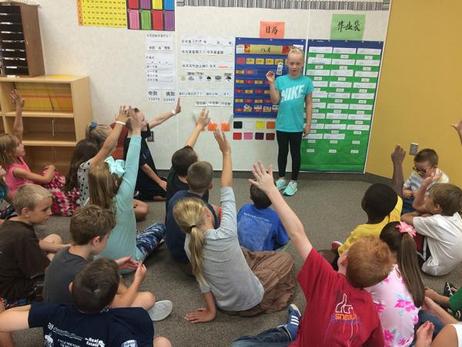A proposal to give state funding directly to high school students, rather than public schools, continues to be hashed out by Utah lawmakers. The bill would take per-pupil funding and put it into a savings account for the individual student, rather than sending it directly to the local school district. This money could then be used by the student to pay for public or charter school, online classes, or even courses at the college level. Like other bills touting school choice, this proposal has been met with strong opinions on both sides of the aisle.
About HB123
The new bill, dubbed HB123, is a proposal that would put money into the hands of students and their parents, rather than the school system. The bill was originally introduced by Republican state Representative John Dougall, according to the Huffington Post. Dougall believes that his bill would offer a number of advantages to Utah high school students, including the creation of more competition between schools, which could raise the bar on the quality of education in the state overall.
ŌĆ£Today what we have is top down funding and we know many of the challenges that come with top down funding,ŌĆØ Dougall told the . ŌĆ£HB123 is what I call grassroots funding where we fund the student rather than institutions.ŌĆØ
Dougall estimates that the current funding amount students would expect to receive from the state would be approximately $6,400 per student, per year, based on current funding amounts. Instead of going to the school district, the money would be placed in a savings account for the individual student, where it could then be used to pay for whatever education choices the student and his parent make. According to the , the money could be used for public school classes, charter schools or online high school courses.
Students who qualified could also opt to take eligible courses at public and some private non-profit Utah colleges. All the participating schools and districts would be able to determine the cost of their individual classes, based on resources required and other factors. Money left over at the end of the year could be earmarked for college expenses once the student graduates from high school.
Potential Benefits of the Bill
Dougall stated in that his new bill would put funding into the hands of parents and students, which would force schools to serve their pupils more effectively. While Dougall admits there are a number of details still to be ironed out of his bill, he believes giving parents the power to determine their childrenŌĆÖs education is the best way to ensure schools respond directly to the needs of their students.
ŌĆ£Money would follow the kid,ŌĆØ Dougall was reported saying in Deseret News. ŌĆ£WeŌĆÖre trying to encourage conscientious consumersŌĆ”We allow them to shop with their feet to help convey what they value most.ŌĆØ
Dougall also claims the bill would offer better control of where education funding is going, since current public education formulas can be confusing to taxpayers. Now parents and students would be in the driverŌĆÖs seat of spending, determining by the needs of the student how much funding each school and program would receive. For example, the current International Baccalaureate program in Utah schools receives a set amount of funding each year. Under DougallŌĆÖs bill, that amount would be determined by the number of students interested in investing into the program.
ŌĆ£We donŌĆÖt know where the money is going, the public doesnŌĆÖt know how much weŌĆÖre spending,ŌĆØ Dougall asserted in Deseret News. ŌĆ£Because the money doesnŌĆÖt follow the child, the bureaucracy tells them ŌĆśnoŌĆÖ.ŌĆØ
Cautiously Optimistic
Some lawmakers are cautiously optimistic about what the bill might bring to the public education system in the state. Rep. Kenneth Sumsion (R-American Fork) told the Salt Lake Tribune he liked the idea of giving funding to students.
ŌĆ£It makes [schools] look a little more like a business and businesses in America have done pretty good,ŌĆØ Sumsion said.
Rep. Merlynn Newbold (R-South Jordan) also found the approach a novel and interesting one. Newbold stated in the Salt Lake Tribune, ŌĆ£It certainly is a fresh new look, and I think it meets some of the needs that weŌĆÖve talked about in public education as far as allowing flexibility to students to move at their own pace to create their own program.ŌĆØ
Lawmakers arenŌĆÖt the only ones to come out in support of DougallŌĆÖs bill thus far. Alpine District school board member Wendy Hart told the Salt Lake Tribune, ŌĆ£I believe the primary responsibility of education rests with the parents and we need to continue to focus on that and reward and encourage that. The bottom line is our government and system should be designed to work from the bottom up, not the top down.ŌĆØ
Opposition to the Bill
Despite the support the bill has received, there are many who believe DougallŌĆÖs approach is not the right one in ensuring a high quality of education for high school students across the state. Some voiced concerns over what schools might do to try and save money, such as crowding 50 or 60 students into a single classroom. Others wondered if parents had all the necessary information about the public education system to help their students make the best possible choices.
At this time Bill HB123 is still in the discussion phase, as lawmakers work to iron out the many wrinkles the bill presents in its current state. Currently, Education News reports lawmakers have asked for more time to work on the bill, so it may be a period of time before HB123 is officially introduced at the state capitol. Nonetheless, the proposal is interesting and in line with the growing trend of re-examining the role of school choice in education reform.












